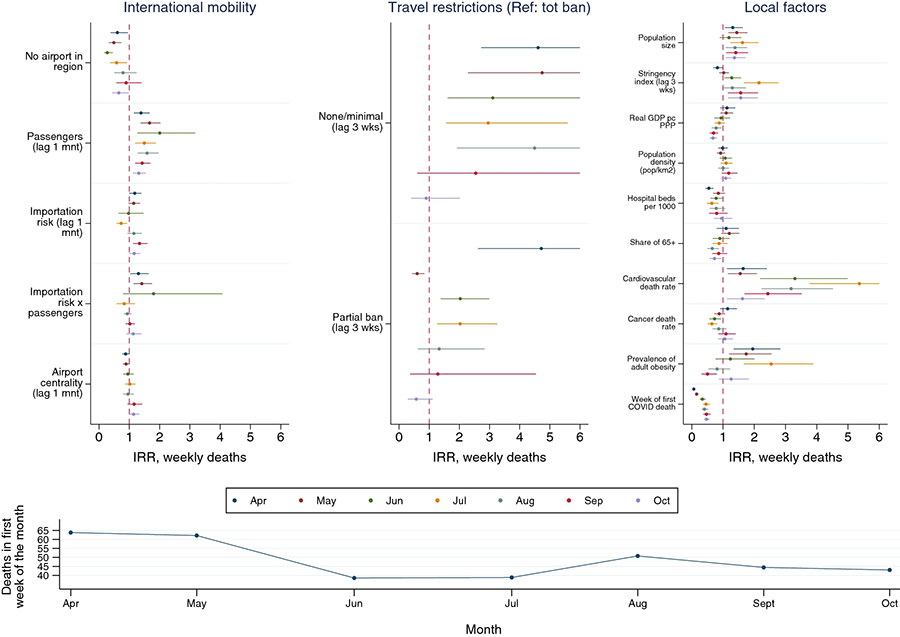Accueil>Impact of air travel on the precocity & severity of COVID-19 deaths
26.10.2022
Impact of air travel on the precocity & severity of COVID-19 deaths
Ettore Recchi, Alessandro Ferrara, Alejandra Rodriguez Sanchez, Emanuel Deutschmann, Lorenzo Gabrielli, Stefano Lacus, Luca Bastiani, Spyridon Spyratos and Michele Vespe
The impact of air travel on the precocity and severity of COVID-19 deaths
in sub-national areas across 45 countries
Scientific Reports 12, 16522 (2022) [open access]
Airports: gateways to Covid-19?
Human travel fed the worldwide spread of COVID-19, but it remains unclear whether the volume of incoming air passengers and the centrality of airports in the global airline network made some regions more vulnerable to earlier and higher mortality.
We assess whether the precocity and severity of COVID-19 deaths were contingent on these measures of air travel intensity, adjusting for differences in local non-pharmaceutical interventions and pre-pandemic structural characteristics of 502 sub-national areas on five continents in April–October 2020.
Our ordinary least squares (OLS) models of precocity (i.e., the timing of the 1st and 10th death outbreaks) reveal that neither airport centrality nor the volume of incoming passengers are impactful once we consider pre-pandemic demographic characteristics of the areas.
We assess severity (i.e., the weekly death incidence of COVID-19) through the estimation of a generalized linear mixed model, employing a negative binomial link function.
Variable effects over time
Results suggest that COVID-19 death incidence was insensitive to airport centrality, with no substantial changes over time. Higher air passenger volume tends to coincide with more COVID-19 deaths, but this relation weakened as the pandemic proceeded.
Different models prove that either the lack of airports in a region or total travel bans did reduce mortality significantly.
We conclude that COVID-19 importation through air travel followed a ‘travel as spark’ principle, whereby the absence of air travel reduced epidemic risk drastically. However, once some travel occurred, its impact on the severity of the pandemic was only in part associated with the number of incoming passengers, and not at all with the position of airports in the global network of airline connections.
 Figure 3 - The impact of air passenger traffic on the severity of COVID-19 deaths (number of deaths in the first week of April–October 2020), controlling for population mixing (NPI), structural predispositions and recursive effects. Negative binomial regressions with continent fixed effects. Risk ratios and confidence intervals.
Figure 3 - The impact of air passenger traffic on the severity of COVID-19 deaths (number of deaths in the first week of April–October 2020), controlling for population mixing (NPI), structural predispositions and recursive effects. Negative binomial regressions with continent fixed effects. Risk ratios and confidence intervals.
